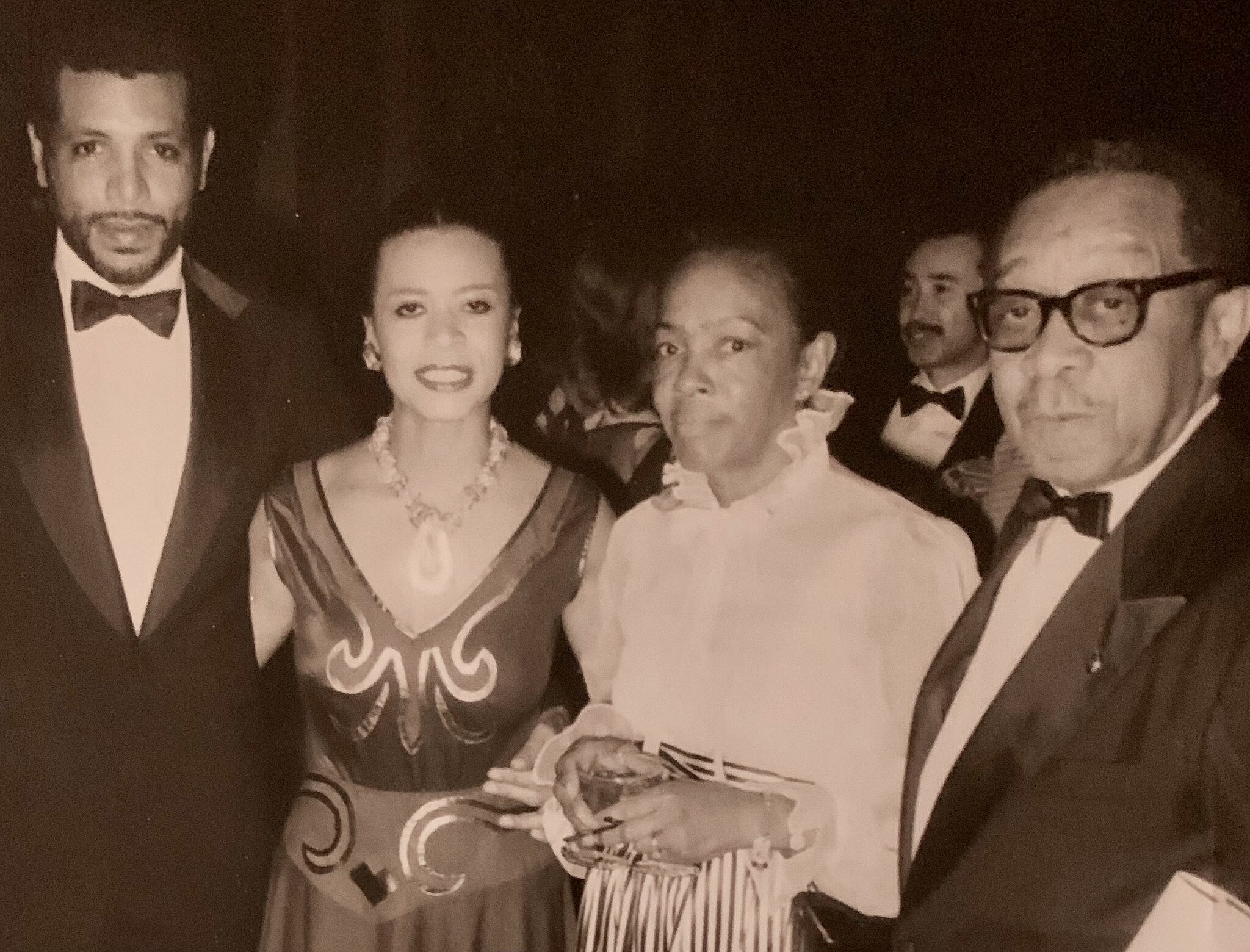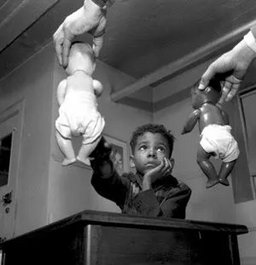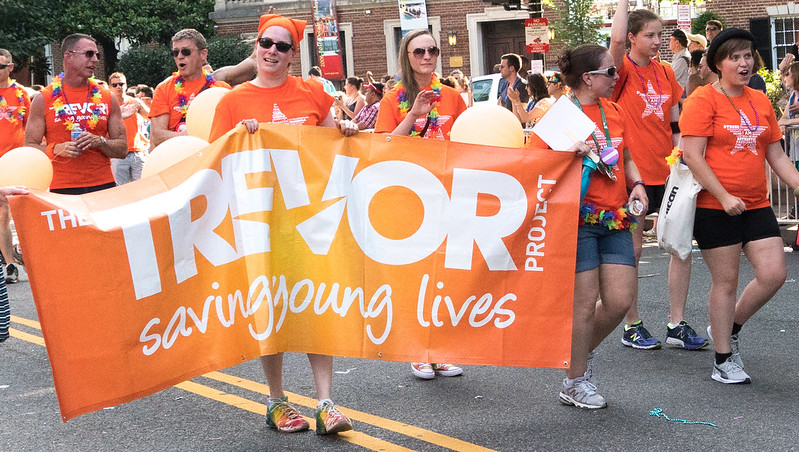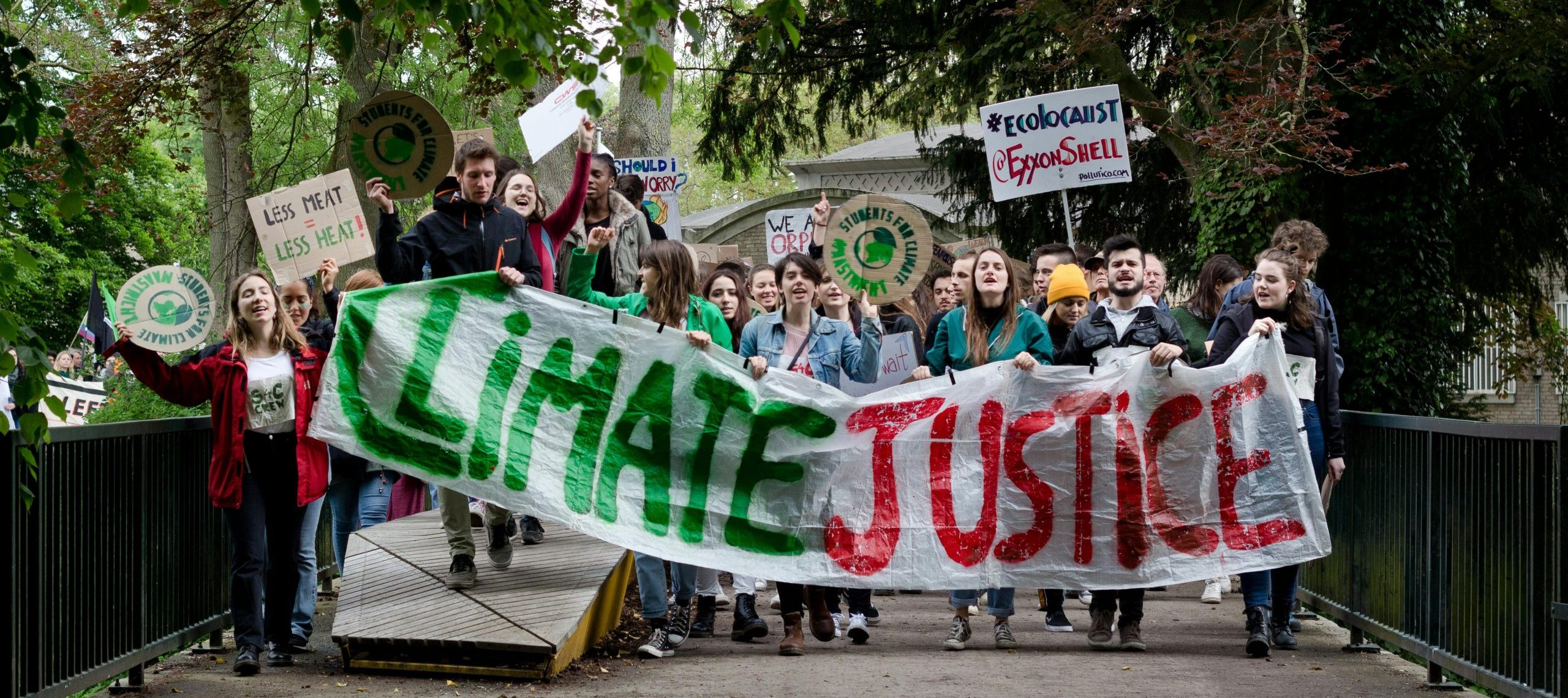8 | Just Societies
Research Story: Psychologists change the course of history
You may already know about the landmark Supreme Court case, Brown v. Board of Education – but did you know that psychological science played a pivotal role in the outcome?
It all started in the late 1930s when Mamie Phipps Clark designed a study to understand the development of racial identity in children as part of her master’s thesis at Howard University.[1] Little did she know that her work would eventually help change the course of American history.

The Doll Tests
Mamie’s study involved 253 African American children between the ages of 3 and 7. She presented each child with four dolls – two black and two white – and asked them a series of questions. “Give me the doll that you like to play with,” she would say. “Give me the doll that is the nice doll,” and “Give me the doll that looks bad.”[1]

The results were heartbreaking. About two-thirds of the children preferred the white doll, calling it the “nice” one they’d like to play with. Most of them also said the black doll “looks bad.” Mamie’s research revealed that developing racial identity was linked causing feelings of inferiority and self-hatred in African American children as young as three years old.[2][3].
Mamie and her husband, Kenneth Clark, continued this line of research. Together, they discovered more evidence of the damaging effects of early awareness of race for Black children. In their studies, Black children often drew themselves as white, showing a desire to distance themselves from their own racial identity. Importantly, they found that Black children in integrated schools developed racial awareness more slowly than those in segregated schools suggesting that integrated learning could mitigate the effects of racial stigma.[4]
The Lasting Impact
Ten years later, the Clarks’ work caught the attention of Thurgood Marshall, a lawyer who was preparing to challenge school segregation in the Supreme Court. Marshall asked the Clarks to replicate their study, curious if Black children still preferred white dolls over black ones.[5]
Kenneth Clark traveled to Clarendon County, South Carolina, to conduct the test again. Despite facing threats and danger, he persevered. “But we had to test those children,” he later recalled. “These children saw themselves as inferior and they accepted the inferiority as part of reality.”[3]
The Clarks’ research became a crucial piece of evidence in the landmark case of
Brown v. Board of Education. For the first time in history, the Supreme Court considered psychological data in a legal case. The doll tests provided compelling proof that separate educational facilities were inherently unequal and harmful to Black children.
In 1954, the Supreme Court ruled that racial segregation in public schools was unconstitutional, overturning the “separate but equal” doctrine that had stood for nearly 60 years. The Clarks’ simple yet powerful study of children and dolls had helped change the course of American history, paving the way for school integration and advancing the cause of civil rights.
Today, Mamie and Kenneth Clark are remembered not just as pioneering psychologists, but as unsung heroes of the civil rights movement. Their work reminds us of the profound impact that psychological research can have on society, and serves as an inspiration to psychology students everywhere.
Key INTEGRATIVE Theme
Psychology values diversity, promotes equity, and fosters inclusion in pursuit of a more just society.
Let’s be real: people have widely different views about important issues in our society. Some folks claim racism isn’t a problem anymore in the United States. Others feel so strongly about their religious beliefs that they can’t accept different viewpoints. And some people think everyone should follow traditional gender roles based on their biology at birth. Maybe you’ve wondered about some of these issues yourself.
Here’s where psychology comes in: We study why people hold certain beliefs, especially when those beliefs aren’t supported by evidence. By understanding this better, we can work toward positive changes in society.
Think about how we form our views of the world: We naturally build our understanding based on our personal experiences and what we’ve learned from others. But here’s the catch – if we only interact with a small group of people and then make assumptions about entire populations based on those limited experiences, we’re likely to develop inaccurate stereotypes. In fact, any psychology student who tried to do research this way (making big claims about large groups based on just a few examples) would quickly learn why this approach doesn’t work.
Link to Learning: Video
Psychology and Social Justice
The field of psychology itself reflects America’s struggle with discrimination. Until relatively recently, psychology was largely closed to anyone who wasn’t a white man. Women were shut out of most graduate programs, and even by 1970, they earned only 20% of psychology PhDs. Black students faced severe restrictions – in the 1940s, only four Black colleges offered psychology majors, while those at predominantly white institutions battled constant racism. Jewish scholars often had to hide their identity just to work in the field. Take Harry Harlow, the famous attachment researcher: though Protestant himself, he changed his name from Harry Israel to avoid anti-Semitic discrimination.
But change, though slow, did come. As women and members of other marginalized groups fought their way into psychology, they transformed it. The field evolved from its narrow focus – the study of white men by white men – into something far richer. Today, psychology not only studies gender, sexuality, and cultural diversity as distinct areas, but weaves these perspectives throughout all its work.
This evolution has allowed psychology to tackle society’s most pressing issues of equality and justice. Two groundbreaking examples show how psychologists have helped drive social change: First, the work of Kenneth and Mamie Clark, whose research on racial segregation’s psychological impact helped end school segregation in America. And more recently, psychologists’ growing understanding of gender identity has reshaped how we approach gender dysphoria in clinical settings. In the final section of this chapter, you’ll find information about how psychologists address a topic that might surprise you: the climate crisis. Yes, psychology truly is everywhere!
Clinical diagnoses can contribute to more just societies
Sometimes, having a medical diagnosis can actually help create a fairer society. While we often want to avoid labeling people with “disorders,” there are times when a formal diagnosis helps people get the care they need. Take the DSM-5-TR[6] (the guidebook mental health professionals use for diagnoses) – its authors carefully choose their words to reduce stigma while still helping people access treatment. Gender dysphoria is a perfect example of this balance.
Gender Dysphoria
What is gender dysphoria? Put simply, it’s the significant distress someone feels when their gender assigned at birth doesn’t match who they know themselves to be. But to really understand this, we need to break down some key concepts:
First, let’s talk about birth-assigned gender (often referred to as “biological sex”). Usually, sex is labeled at birth using the binary categories “male” or “female” based on physical characteristics like genitalia (primary sex characteristics). Later, this includes features that develop during puberty like facial hair or breasts (secondary sex characteristics). Note: While we’re keeping things simple here, there are many biological variations that make gender assignment more complex such as intersex conditions, incomplete anatomy development, chromosomal abnormalities, and more.
Then we have two related but different concepts: “gender role” refers to how we live publicly – the gender others see and how society labels us (like on ID cards or in sports); and “gender identity” which is our internal sense of who we are, how we feel and act in our bodies, and how we express gender through things like clothing, accessories, hairstyle, how we carry ourselves, how we refer to ourselves. This could be male, female, somewhere in between (gender fluid), or neither (nonbinary, gender neutral).
Some people feel completely comfortable with their birth-assigned gender. Others experience a mismatch, between their role, identity, and assigned gender – and this mismatch can cause serious distress. That is gender dysphoria. This distress often becomes more intense during puberty, when body changes make birth-assigned sex more obvious. However, some people notice these feelings much earlier – even some young children can sense when their assigned gender (and the expectations placed on them related to gender) doesn’t fit who they are.
Two important points to remember:
- Gender dysphoria refers to the clinically significant distress caused by the mismatch – not the mismatch itself
- Gender dysphoria is different from sexual orientation. Sexual orientation is about who you’re attracted to; gender identity is about who you know yourself to be.
What Makes It a Diagnosis?
Although the diagnostic criteria in the DSM-5-TR[5] is long and detailed, it can be summed up in one sentence: gender dysphoria is diagnosed when someone experiences serious distress caused by assigned sex at birth not matching who they know themselves to be, and significantly impacting their life for at least six months. This isn’t just about preferences or personality – it’s about significant challenges in daily life, such as struggling at school or work, having trouble making friends, difficulties in relationships, and experiencing mental health challenges
Important Note: Just because someone doesn’t fit traditional gender roles doesn’t mean they have gender dysphoria. For example, a woman might prefer traditionally “masculine” activities or clothing but feel completely comfortable being a woman. Gender dysphoria is specifically about the distress of feeling your true gender doesn’t match your body or assigned gender.
How common is gender dysphoria?
About 0.5% of people (that’s 5 in 1,000) meet the full criteria for gender dysphoria. However, this number might be lower than reality since not everyone feels comfortable talking about their experiences.
How is gender dysphoria treated?
Treatment focuses on support, not change. This “gender affirming care” has several key parts:
Simple But Powerful Support: Research shows that having just ONE person who uses someone’s preferred name (and pronouns) is associated with a dramatic reduction in suicide risk.
Professional Help: Counseling can help an individual develop coping skills to ease the distress, and provide support for handling bullying or discrimination. It can also prevent and treat related problems like depression or substance use.
Medical Options: Some opt for reversible treatments that make someone look more masculine or feminine such as puberty blockers to pause physical changes or hormone therapy to develop masculine or feminine features. Others choose more permanent options such as gender reassignment surgery (after years of careful preparation and counseling).

The Good News
While gender dysphoria can cause serious distress, proper treatment makes a huge difference. People who receive support and appropriate care can lead happy, healthy lives. Research shows that treatment significantly reduces depression and suicide risk.[7][8][9]
How Can You Help?
- Use people’s chosen names and pronouns
- Include different gender options on forms
- Ask people what they prefer to be called
- Challenge myths with facts
- Create welcoming spaces for everyone
Links to Learning: Websites
Want to learn more? Check out these pages:
Five Ways to Support LGBTQ+ Mental Health
How to Support LGBTQ+ Children
The Trevor Project: Suicide Prevention for LGBTQ+ Young People
Changing our World with Psychology
Here’s a big question: How can psychology help save our planet? The earth is changing faster than many realize – so rapidly that it will become uninhabitable if we cannot implement solutions now. Let’s explore how understanding human behavior, decision-making, and attitudes could make a real difference.
Climate Change
The global climate crisis is rapidly changing our world, from seasonal weather patterns, to how we access and consume food, to migration patterns, and more. While the climate crisis is often viewed as a matter for environmental scientists and policymakers to solve, psychology has a critical role to play.[9]
Why? Because any real change – whether individual or society-wide – requires understanding how people think and act. Surprisingly, many climate experts overlook the this powerful tool, even though environmental psychology has existed as a field since the 1960s. These psychologists aim to understand environment-related behaviors, attitudes, biases, and motivations. While some environmental psychologists conduct research with the goal of influencing climate policy, others study the effects of climate policies on individuals, communities, and human psychology.

So how does psychology connect to climate change? Two basic psychological concepts help explain why people often don’t take action:[10]
Cognitive Dissonance: you know driving and traveling on airplanes harms the environment, but you enjoy these activities. This mental conflict makes you uncomfortable, and you convince yourself that either the discomfort isn’t that bad, or that your individual activities aren’t causing much harm
Learned Helplessness: Climate change feels too massive to solve, and news about extreme weather and other climate events can be overwhelming. We believe we are incapable of helping and think “What’s the point of trying?” As a result, we give up and don’t make eco-friendly choices.
It is important to note here that while significant policy change is the most important avenue to address the climate crisis, individual behaviors do matter. When we ignore cognitive dissonance and give in to learned helplessness, we contribute to the ongoing crisis and encourage others to do the same. The good news? Psychology also offers solutions! Here’s how we can leverage other psychological knowledge to motivate change:
Group Identity: People care what their community thinks. As individuals, we rely on our group identities and social approval to make decisions. By promoting communication and creating communities that stigmatize anti-environmental behaviors, individuals are incentivized through social approval to adopt climate-friendly habits such as using public transportation, reducing waste, and transitioning to a plant-based diet.
Availability heuristic: Keep the issue front and center. When information about climate change is top of mind, we are more likely to choose the more climate-friendly action. Although we do not want to increase eco-anxiety, individuals are likely to make more climate-friendly decisions, such as choosing to walk rather than drive, if they are thinking about climate change on a regular basis
Social norms: Make eco-friendly choices the “normal” thing to do. Research on social norms and issue salience indicates that carefully crafted communication targeting social approval, group identities, and risk analysis can increase pro-environmental behaviors. Build supportive communities that encourage using public transportation, reducing waste, choosing plant-based meals more often, and re-using items until they wear out.

Climate change hits hardest in low-income communities and countries, even though wealthy ones cause most of the human-driven climate damage.[11] While the psychological barriers explored above prevent some from adopting pro-environmental behaviors, another important factor is your background. Social context and lived experience provide additional incentives and/or barriers to behavior change.
For example, communities with egalitarian worldviews (i.e. they value equality) tend to take climate change more seriously, while individualistic societies (focused on individual success) are more likely to resist change, because they perceive pro-environmental changes as a risk to their personal comfort and freedom.[12]
The Big Picture: Psychology is not just an abstract science – it’s a tool for creating a better world. The climate crisis is one of the most pressing and consequential justice issues of our generation, with effects for decades to come.
With this in mind, as psychologists we should advocate for climate policies. Many environmental policies seek to change individual and societal behavior; we can ensure these policies include evidence-based applications of psychology. While policy change is paramount, there are ways to introduce environmental psychology into our everyday lives to encourage us to design better environmental policies, change our own habits, influence others to make eco-friendly choices, and create lasting positive change.

Psychology for More Just Societies
Throughout this chapter, we’ve seen how psychology can create real change in our world – from challenging racial segregation in schools, to supporting gender identity, to fighting climate change. But the work isn’t done. As you’ve learned in this textbook, psychology gives us powerful tools to understand human behavior and create positive change. Whether you become a psychologist or not, you can use these insights to:
- Challenge discrimination when you see it
- Support others in being their authentic selves
- Make choices that help protect our environment
- Stand up for justice in your community
Remember – psychology isn’t just about understanding how people think and behave. It’s about using that knowledge to build a more fair, inclusive, and sustainable world for everyone. You’re now part of this ongoing story.
How will YOU use psychology to make a difference?
Authors: Alison H. Melley, Anna S. Caruso, Madison Pristera, Sara Melley
Contributors: Neha Kannan, Sarah Kleppinger, Kennedy Korzen
- Clark, K.B., & M.P. Clark. 1947. “Racial Identification and Preference in Negro Children.” In Readings in Social Psychology, 3rd ed., eds. E.E. Maccoby, T.M. Newcomb, & E.L. ↵
- Clark, K.B., & M.P. Clark. 1947. “Racial Identification and Preference in Negro Children.” In Readings in Social Psychology, 3rd ed., eds. E.E. Maccoby, T.M. Newcomb, & E.L. ↵
- Sharpe, T.S.R. 2014. Shades of Knowledge: Young Children’s Perceptions of Racial Attitudes and Preferences. Doctoral dissertation. Ashland, OH: Ashland University ↵
- Clark, Kenneth B., and Mamie K. Clark. “Segregation as a Factor in the Racial Identification of Negro Pre-School Children: A Preliminary Report.” The Journal of Experimental Education 8, no. 2 (1939): 161–63. ↵
- Jepkemboi, G., Mohan, A., & Christensen, L. M. (2020). Understanding Children’s Sense of Identity: The Life and Work of Dr. Mamie Phipps Clark (1917–1983). YC Young Children ↵
- American Psychiatric Association . Diagnostic and statistical manual of mental disorders, fifth edition, text revision. Washington: American Psychiatric Association, 2022. ↵
- The Trevor Project. 2023 U.S. National Survey on the Mental Health of LGBTQ Young People ↵
- Russell, S. T., Pollitt, A. M., Li, G., & Grossman, A. H. (2018). Chosen name use is linked to reduced depressive symptoms, suicidal ideation, and suicidal behavior among transgender youth. Journal of adolescent Health, 63(4), 503-505. ↵
- Pollitt, A. M., Ioverno, S., Russell, S. T., Li, G., & Grossman, A. H. (2021). Predictors and mental health benefits of chosen name use among transgender youth. Youth & Society, 53(2), 320-341. ↵

